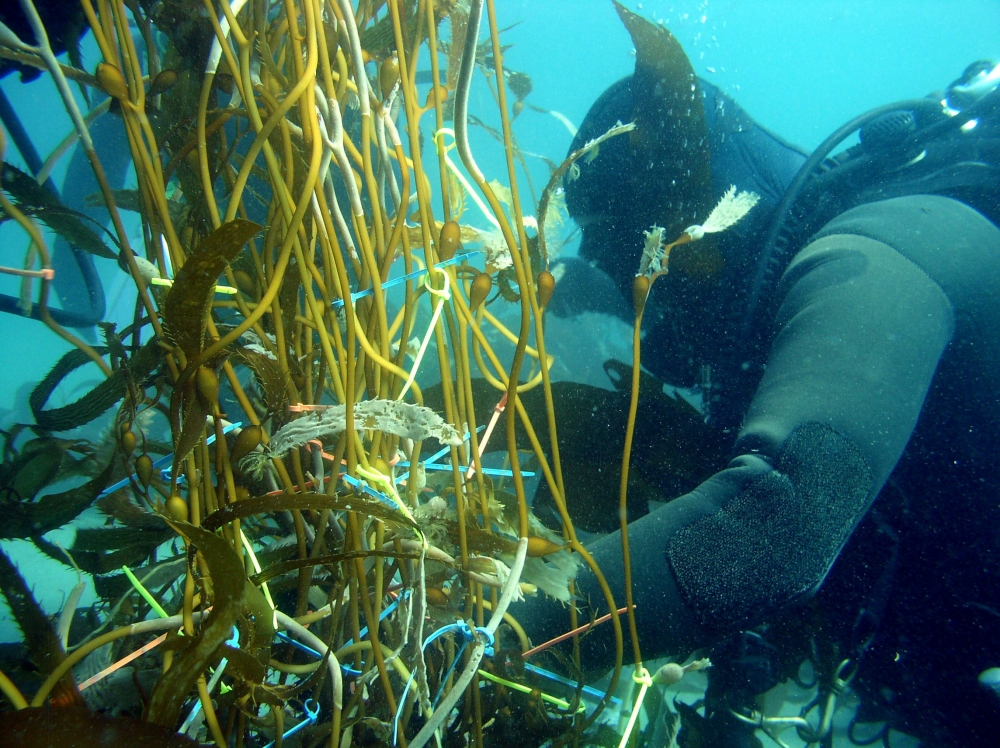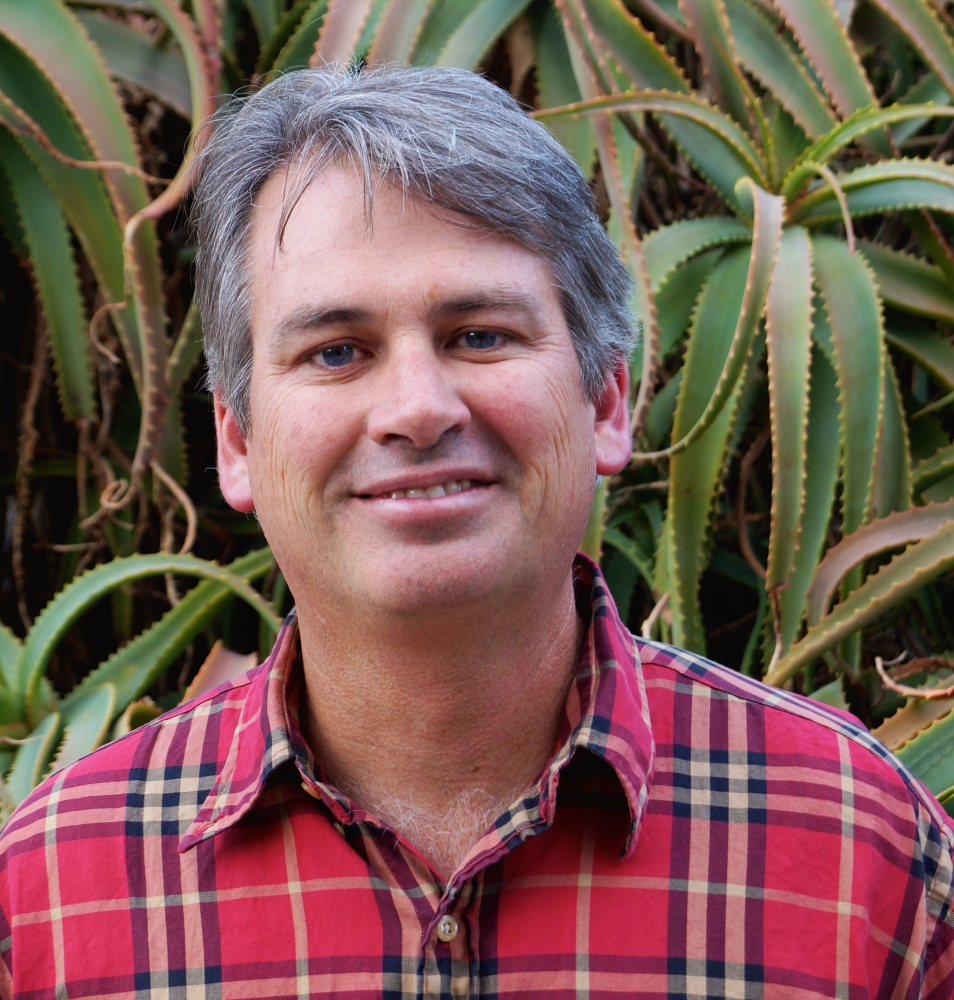
Tracing Biodiversity

For almost 20 years, researchers at the Santa Barbara Coastal Long-Term Ecological Research (SBC LTER) site have conducted detailed censuses of the majestic kelp forests off Santa Barbara. By counting fish species and placing them in the context of their environmental conditions, UCSB coastal marine ecologist Robert Miller and his colleagues can look at the effects of human activity and natural drivers on kelp and its ability to maintain the kelp forest communities.
Miller heads the research at this National Science Foundation-supported site. For him and his collaborators — including UCSB marine ecologist Thomas Lamy (now at University of Montpelier), postdoctoral researcher Christie Yorke and colleagues Francisco Chavez and Kathleen Pitz from MBARI (Monterey Bay Aquarium Research Institute) — taking a census is more than just a matter of deploying divers to take a headcount; the researchers are also interested in beta diversity, which can be a somewhat convoluted concept for even seasoned ecologists.
“There are a lot of different ways to measure it, but the way I think of it is that it’s the turnover of species as you go from one place to another,” said Miller. “How many new species are in a place compared to the last place you went to? And so that obviously increases the farther you go.”
Beta diversity is useful for measuring the overall state of biodiversity between given areas over time, which in turn provides some indication of those areas’ ecological health. A higher beta diversity number (more different species) could indicate robust systems that are able to support various, interconnected forms of life. A lower beta diversity number (fewer different species) might signal that conditions have become such that only certain organisms are able to survive, with effects that could reverberate into adjacent spaces.
But, counting species at SBC LTER has its challenges. For one thing, it’s underwater,requiring divers to conduct underwater visual surveys or to deploy and monitor special equipment, such as cameras For another, many species are mobile and often not represented during these surveys.
“Some might be there outside the time you are sampling, say at night or at different times of day,” said Miller. Others, he added, are cryptic or too small to notice.
Enter environmental DNA.
“As organisms move through the water, they leave behind molecular traces of themselves through shed, excreted, or sloughed off material that contains their DNA,” explained Kathleen Pitz, a research associate at MBARI in Moss Landing, California. “We now know it’s possible to detect this discarded DNA in seawater and identify which species it originated from.”
In a paper published in the journal Scientific Reports, the researchers demonstrate the effectiveness of eDNA analysis in the measurement of beta diversity in aquatic environments. Sampling the water and analyzing its DNA results in an inventory of the species that were in the vicinity during the time the sample was taken — “a Rosetta Stone for biodiversity,” according to the paper.
For the study — a collaboration with the Southern California Bight Marine Biodiversity Observation Network and Central and Northern California Ocean Observing System (CenCOOS) Central California Marine Biodiversity Observation Network — the researchers compared the results of eDNA samples taken from nine sites along the Santa Barbara coast and two off Santa Cruz Island to the results of underwater visual censuses (UVC) taken at those same areas. “By comparing these two sources of data, both visual and eDNA-based, we could begin to answer some of the questions around how well eDNA would detect different fish species that we know are present in the area from this long visual time series,” explained Pitz.
“The eDNA was able to detect a lot more species than the diver counts, which is not particularly surprising because fish shed their DNA into the water, through their slime and breathing, et cetera,” Miller said. The higher resolution of eDNA results compared to the underwater survey data gave the researchers a clearer picture of the presence and distribution of the different fish species and fish families in the region. “This study demonstrates that eDNA performs as well, or better than, visual diver surveys in capturing biodiversity in kelp beds,” said Francisco Chavez, a biological oceanographer at MBARI. Importantly, “eDNA provides a means to scale observations in support of improved coastal management.”
In terms of abundance, the eDNA species detections align with the information taken via UVC, according to Miller.
“They matched up pretty well with the diver surveys — the really abundant fish that were seen by the divers are really abundant in the eDNA samples as well,” he said. “The difference is really in the rarer species, or the commonly less counted species, we see these more consistently in the eDNA than in the diver surveys.” Species such as the señorita, black surfperch, sheephead and garibaldi were found in higher relative abundance by both eDNA and visual surveys.
Meanwhile, eDNA succeeded in capturing the presence of leopard sharks and bat rays where visual surveys did not. It also, for the first time at the LTER, detected species such as California lizardfish and barred surfperch — fish that are known to live in nearby sandy bottom areas — and the highly mobile great white shark.
Is this the end of the diver survey, given eDNA powerful detection capabilities? No, Miller said.
“The nice thing about eDNA is that it does provide that temporal integration, to give you a better idea of what might be there outside of the time you’re sampling,” he said. “But it can be hard to conclude whether they were really at the site.” The DNA may have traveled a long distance, and some fish may shed more than others.
“We’re still learning about the different factors that control the presence of eDNA in seawater, such as how long DNA lasts in the water before degrading or how quickly a fish leaves behind enough material for us to detect its DNA within a sample,” added Pitz.
In addition, the fish DNA databases against which the metabarcoding results are referenced need to be improved. (Several DNA sequences detected could not be found in the library.) “More research,” Miller said, “will improve the confidence in interpreting eDNA data.
“We don’t think it’s something that’s going to replace traditional methods, but it’s a really good additional data source that could be used to look at whether these fish communities and other communities are changing,” he added. “eDNA will be a very useful way to expand ocean monitoring, particularly of rare species and habitats that are hard to observe, like deep water, with much less effort and cost than sending out teams of expert fish-counting divers or submersibles.”
MBARI is a private, non-profit oceanographic research center, founded by David Packard in 1987. The mission of MBARI is to advance marine science and technology to understand our changing ocean.



